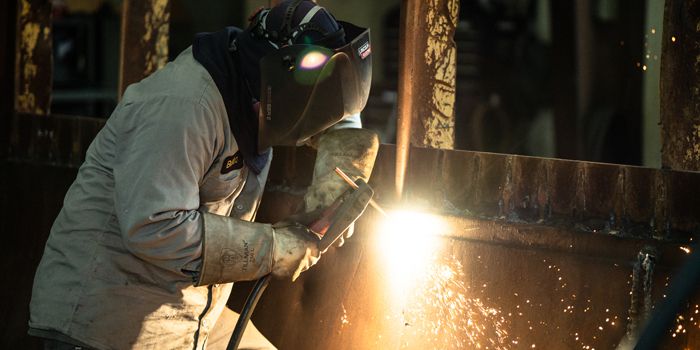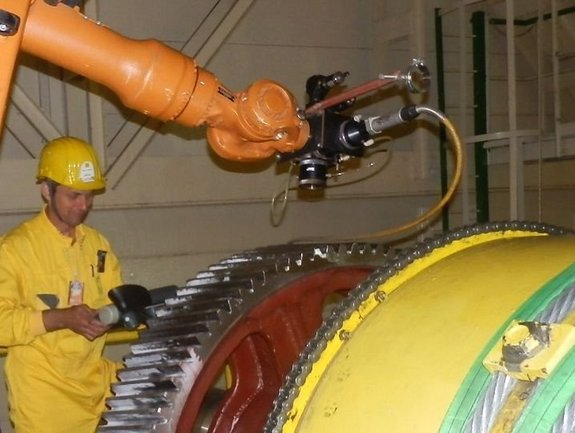Common problems explained and solved by Montana Mobile Welding and Repair Belgrade Fabrication
Wiki Article
Usual Welding Fixing Issues and Exactly How to Address Them Effectively
Welding repairs frequently run into a series of problems that can endanger the integrity of the last product. Typical troubles consist of inadequate penetration, porosity, and imbalance, to name a few. Each defect provides distinct obstacles that require details approaches for resolution. Comprehending these issues is vital for welders intending to boost their end results and skills. This conversation will certainly discover these typical welding repair service concerns and effective techniques to resolve them.Poor Penetration
Poor infiltration takes place when the weld steel falls short to completely fuse with the base product, leading to weak joints and prospective architectural failings. This problem often comes from inadequate heat input, inaccurate electrode angle, or incorrect welding speed. Welders may come across insufficient penetration due to a mistake of the essential parameters for a certain material thickness or type. Furthermore, contamination on the base product's surface area can hinder efficient bonding, worsening the issue. To attend to insufficient penetration, welders ought to guarantee ideal settings on their equipment and preserve a clean work surface. Regular examination of welds is advised to determine any type of deficiencies early, enabling timely corrections and the prevention of jeopardized structural integrity in bonded assemblies.Porosity
Porosity is a common defect in bonded joints that manifests as tiny gas bubbles entraped within the weld steel. This flaw can compromise the integrity of the weld, resulting in minimized strength and possible failing under tension. Montana Mobile Welding and Repair. Porosity generally emerges from contamination, wetness, or improper welding methods, which enable gases to leave into the molten weld swimming pool. To attend to porosity, welders should assure appropriate surface preparation, keep a clean workplace, and make use of ideal welding parameters. Furthermore, selecting the best filler product and protecting gas can mitigate gas entrapment. Routine examination and testing of welds can help recognize porosity early, assuring prompt rehabilitative activities are taken, thus maintaining the top quality and dependability of the bonded frameworkMisalignment
Imbalance in welding can emerge from numerous factors, consisting of inappropriate arrangement and thermal development. Understanding the source is important for effective resolution. Numerous correction techniques are readily available to straighten elements and assure architectural honesty.Sources of Misalignment
Welding misalignment typically originates from a range of underlying concerns that can endanger architectural honesty. One key cause is incorrect fit-up of elements before welding, which can cause spaces and unequal surfaces. Variants in thermal expansion during the welding procedure can also lead to distortion, specifically if the products being signed up with have various coefficients of expansion. Additionally, inadequate securing and fixturing may fall short to hold components firmly in location, bring about activity during welding. Poorly conserved equipment, consisting of welding machines and tools, might present incongruities in the weld grain, more adding to misalignment. Ultimately, operator error, stemming from insufficient training or experience, can also play a significant function in producing misaligned welds.Modification Methods Available
Dealing with imbalance efficiently requires a combination of rehabilitative methods tailored to the particular concerns handy. One typical method is the usage of fixtures or jigs to hold elements in the proper placement throughout welding, making certain consistent alignment. Furthermore, preheating the products can help lower distortion and improve fit-up. For substantial misalignment, mechanical realignment techniques, such as utilizing hydraulic jacks or clamps, can be utilized to deal with the placement prior to welding. Post-weld heat therapy may also be needed to relieve stress and anxieties triggered by imbalance. Ultimately, careful evaluation and modification throughout the setup phase can stop imbalance issues from becoming significant problems, advertising a smoother welding procedure and improving general architectural stability.Distortion
Distortion is an usual obstacle in welding that can arise from various factors, consisting of uneven cooling and heating. Recognizing the reasons for distortion is essential for applying efficient avoidance techniques. Resolving this concern not only improves structural integrity yet likewise enhances the overall high quality of the weld.Root causes of Distortion
When based on the intense warm of welding, materials frequently undergo modifications that can cause distortion. This phenomenon primarily arises from thermal expansion and contraction during the welding process. As the weld location warms up, the material increases; upon air conditioning, it contracts, which can produce interior stress and anxieties. In addition, uneven heating across a workpiece can aggravate these stress and anxieties, leading to bending or bending. The kind of material additionally plays a substantial duty; metals with varying thermal conductivity and coefficients of development might respond in a different way, bring about unforeseeable distortions. Additionally, inadequate joint layout and poor fixturing can add to misalignment during welding, increasing the possibility of distortion. Comprehending these causes is necessary for effective welding repair work and avoidance mig welder for sale approaches.Prevention Techniques
Efficient prevention strategies for distortion throughout welding concentrate on regulating warmth input and making certain appropriate joint design. Maintaining a constant heat input aids to lessen thermal expansion and tightening, which can lead to distortion. Using methods such as preheating the work surface can additionally minimize the temperature slope, promoting consistent heating. Additionally, picking ideal joint layouts, such as T-joints or lap joints, can improve stability and minimize stress and anxiety concentrations. Applying correct fixturing to safeguard the work surfaces in area additionally help in preserving placement during the welding process. Staggered welding sequences can distribute warm a lot more equally, preventing local distortion. By applying these approaches, welders can substantially decrease the possibility of distortion and enhance the general high quality of their welds.Splitting
Splitting is an usual problem experienced in welding repair services, frequently arising from various factors such as incorrect air conditioning prices, material choice, or insufficient joint prep work. The event of cracks can greatly compromise the stability of the weld, bring about potential failures during procedure. To address this concern, welders have to first analyze the origin, ensuring that materials work and suitably picked for the particular application. Additionally, managing the air conditioning price during the welding procedure is necessary; fast air conditioning can cause anxiety and lead to fracturing. Correct joint layout and preparation additionally add to reducing the danger. Implementing these strategies can enhance weld high quality and resilience, inevitably minimizing the possibility of splitting in completed weldments.
Incomplete Combination
A considerable problem in welding repair services is incomplete combination, which happens when the weld metal does not effectively bond with the base product or previous weld passes - Belgrade Fabrication. This defect can cause weak points in the joint, possibly jeopardizing the integrity of the bonded framework. Aspects adding to incomplete blend consist of read this article inadequate heat input, incorrect welding technique, and contamination of the surfaces being joined. To address this issue effectively, welders must ensure appropriate pre-weld cleaning and surface area prep work, along with change their welding specifications to achieve ample infiltration and fusion. Routine inspection throughout the welding process can additionally assist identify insufficient fusion early, permitting prompt rehabilitative measures to improve the total top quality of the weldOverheating
While welding repair services can improve architectural stability, overheating provides a substantial obstacle that can bring about product degradation. Excessive warmth during welding can modify the mechanical properties of metals, resulting in lowered toughness, boosted brittleness, and bending. This phenomenon is particularly crucial in high-stress applications where architectural integrity is critical. Determining getting too hot can entail visual evaluations for discoloration or distortion, as well as keeping track of temperature level throughout the welding process. To minimize the risks linked with overheating, welders need to utilize ideal methods, such as managing warm input, adjusting traveling rate, and using ideal filler products. Furthermore, carrying out pre- and post-weld warm treatments can help restore material properties and enhance the overall high quality of the repair work, ensuring long-lasting performance and security.Regularly Asked Questions
What Are the Usual Indicators of a Welding Problem?

How Can I Evaluate My Welds for High quality?
To test welds for quality, one can use aesthetic inspections, ultrasonic screening, and radiographic approaches. Each strategy ensures architectural integrity, determines issues, and confirms adherence to defined criteria, ultimately boosting the dependability of the welded joints.What Safety and security Precautions Should I Take While Welding?
When welding, one should focus on security by putting on suitable individual protective tools, ensuring correct ventilation, securing flammable materials away, keeping a clean workspace, and understanding surroundings to avoid injuries and mishaps.Can I Repair a Weld Without Redesigning the Entire Joint?
Fixing a weld without redesigning the entire joint is feasible, depending on the damage (Montana Mobile Welding and Repair Fabrication). Methods such as grinding, adding filler material, or making use of a welding process can efficiently address specific defects while protecting the surrounding structureWhat Devices Are Important for Efficient Welding Repairs?
Important devices for effective welding repairs include a welding machine, cord brush, mill, protective gear, clamps, and filler materials. Each device plays an essential duty in guaranteeing quality and safety and security throughout the fixing process. Porosity usually arises from contamination, moisture, or improper welding methods, which permit gases to run away into the liquified weld pool. Inadequately conserved tools, including welding devices and devices, might present disparities in the weld grain, additional adding to imbalance. When subjected to the intense warmth of welding, materials usually undergo modifications that can lead to distortion. Splitting is a common issue experienced in welding repair work, frequently resulting from various elements such as inappropriate cooling rates, material option, or insufficient joint preparation. A considerable concern in welding fixings is insufficient blend, which takes place when the weld steel does not appropriately bond with the base material or previous weld passes.Report this wiki page